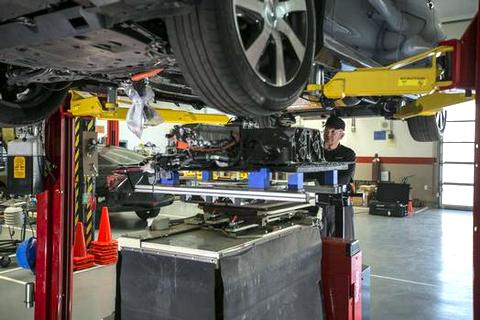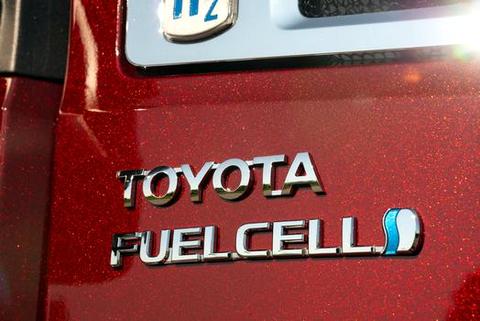New Truck Boosts Driving Range From 200 To 300-Plus Miles
Only a handful of global automakers are actively pushing hydrogen fuel cell technology, and none are as committed as Toyota. This commitment is evidenced with the recent introduction of the company’s second iteration of its Toyota Project Portal hydrogen fuel-cell electric Class 8 semi-truck. The first version began testing last April and made it from concept to in-service use in just about a year.
Since April, the semi has logged nearly 10,000 miles of testing and drayage operation at the Ports of Long Beach and Los Angeles. That truck boasts a driving range of more than 200 miles per fill, 670-plus horsepower and 1,325 pound-feet of torque, enough to haul up to 80,000 pounds.

The first truck, known as “Alpha,” was based on a standard Kenworth T660; the second generation uses a new Kenworth T680 low-roof 40-inch sleeper cab model.
“By evaluating the first truck in our test facilities and on the actual roads in the L.A. area, we made a list of improvements for the new Beta truck build process and performance enhancements,” Andrew Lund, chief engineer on the project, said in a release. “We needed to move beyond a proof of concept, which the first truck accomplished, to something that is not only better than the original, but is also more commercially viable.”
Same Powertrain, More Driving Range
The Beta fuel-cell rig improves upon its predecessor, most notably by substantially enlarging fuel storage system with six 10 kilogram tanks instead of four. The tanks hold the hydrogen, compressed to 10,000 pounds-per-square-inch, that the fuel cell system converts to electricity to drive the truck’s twin electric motors.

Like the first truck, the Beta’s twin fuel cell stacks, borrowed from Toyota’s Mirai fuel cell sedan, are placed under the floor of the truck’s cab. To cool the stacks, the Mirai’s radiator was replaced by a standard diesel truck radiator.
Power electronics, cooling system and air compressor for the fuel cell stacks are fitted into the former engine bay.
Straight from the Mirai is the gear selector for the single-speed transmission.
Even though the Beta uses the same dual electric motors along with the same 12-kilowatt-hour lithium-ion battery and fuel cell stacks as the first truck and produces the same power output, the new truck’s lighter weight and improved cooling system increase overall performance by around 10 percent.
What’s Next?
Project Portal 2.0 will begin its drayage work at the two Los Angeles area ports this fall. Toyota last fall announced plans for construction of a commercial-scale hydrogen power plant and an on-site fueling station at the Port of Long Beach. It’s projected to come online in 2020.
Toyota is serious about bringing the truck to production. The company has said it wants to completely eliminate carbon dioxide, diesel particulate matter and oxides of nitrogen (NOx, a smog precursor) emissions from its Toyota Logistics facility at the Port of Long Beach by 2050.
T

o reach that goal, Toyota is working on improvements for its next-generation Mirai fuel-cell vehicle, expected early in the 2020s. Among changes to the Mirai, the automaker wants to extend driving range from 310 miles to as much as 466 miles, and 620 miles by 2025.
The Mirai’s changes will work their way into future semi-trucks as well as Toyota’s plans for fuel cell vehicle models, including pickups, SUVs and commercial trucks such as small delivery vehicles.
Related Stories You Might Enjoy–Electric Truck Wars
News: UPS To Test Thor Electric Delivery Trucks
News: Daimler Takes Cover Off Electric Freightliner
10 Arguments For/Against Electric Trucks
News: Mercedes eActros Electric Truck Begins Customer Testing
News: Volvo Announces Electric Trucks

4 thoughts on “News: Toyota Shows Off Next Version Of Hydrogen Fuel Cell Semi-Truck”